|

6. The works under Stewarts and Lloyds,
1920 - 1966
| We can interrupt our source here to say
something further about this important change in ownership.
Stewarts and Lloyds were a very old company, an amalgamation of a
company set up by Samuel and Edward R. Lloyd in Birmingham in 1859;
and a company set up by Andrew Stewart in Glasgow in 1861. By 1920
it had wide interests in iron and steel but mainly concentrated on
tube making. In the early 20th century the company
adopted a policy of securing its position by acquiring companies
which would enable them to control all of their supplies,
manufacture and distribution.
So Alfred Hickman Ltd was a very
suitable acquisition, and with it they got the Hickman owned company
Ernest N. Wright Ltd. of Monmore Green and Millfields.
By the time of the takeover in 1920 Wrights were mainly
constructing furnaces for the production of iron and
steel and this they continued to do, over an even wide
range of furnaces, after the takeover. |
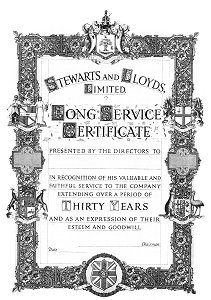
A long service certificate. |
|
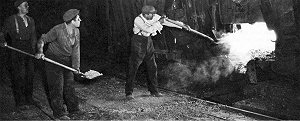
Fettling an open hearth at Bilston. |
(What Stewarts and Lloyds did not acquire was
Hickman's Tarmac business which was an independent
company. It is not clear but they probably did
not get the basic slag fertilizer business either). |
To return to our anonymous source:
"A Morgan Skelp Mill was installed in 1921
for the production of strip for tube making. A little later the
26‑inch billet and bar mill was modernised to a 28‑inch mill,
electrically driven and capable of producing slabs in addition to
the billets and bars required for tube making. A feature of this
mill was the very good shape of rounds produced which, coupled with
the steelmaking techniques employed, enabled bars to be used for
tube making in the black‑conditions. This was the only works that
was able to do this on a regular production basis. Whilst this was
rightly a matter of great pride to the mill teams, it was, of
course, expensive in terms of manpower, but nevertheless justified
itself for many years.
| "Instrumentation on the Open Hearth Furnace
was applied initially in the late 1930s, roof temperatures and
chequer temperatures being the first points tackled. With increasing
experimentation and sophistication coupled with experience shared
with one or two other works, “the clocks” as the furnace men called
them, became not only accepted but indispensable. |
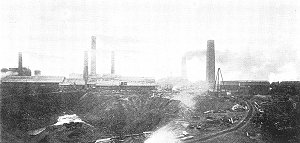
An early 20th century view of
the works. |
 |
A view of the works probably
in the first half of the 20th century.
The canal
remained an important feature of the works which also
had an internal railway system. |
"From the employees’ point of view,
reference must be made among other things, to the provision of a
licensed canteen, along with slipper baths and a swimming bath in
1910. These were the outward and visible signs of concern for the
employees welfare that had existed for many years and included a
provident fund and other methods suitable to the age which, the more
enlightened employers adopted in those days.
| Disputes and strikes
did occur, of course, but provision was made for the wives and
children of employees on strike to have a plate of soup if they
cared to come for it. Many of them did!
Between the wars under the
new ownership, this spirit of interdependence was fostered and
culminated in 1939 in the opening of the Social Centre, built by the
Company towards the furnishings of which the men made a substantial
contribution out of their own funds." |
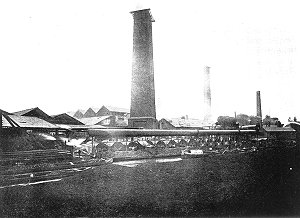
Another early 20th century
view of the works. |
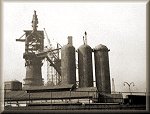 |
|
 |
|
 |
Return to
1900-1919 |
|
Return to
the
beginning |
|
Proceed to
World War 2 |
|



